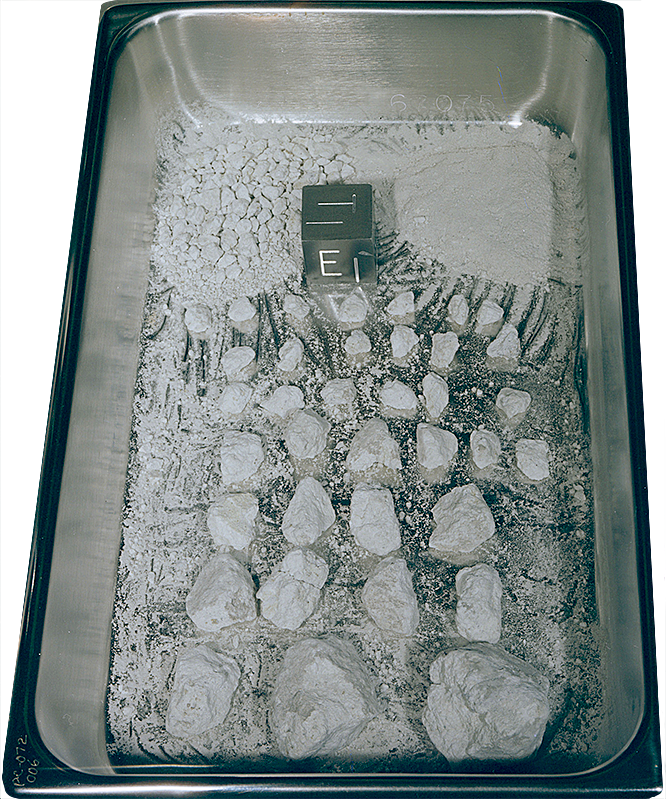
Fact sheet
67075 is a very friable white anorthosite with evidence of some flow and some recrystallization in the solid state. Detailed petrographic description showed that the sample may be a mixture of closely related anorthositic rocks from a layered igneous intrusion. It has been suggested that 67075 was assembled from genetically-related fragments of a layered plutonic anorthosite complex. This explanation can explain the pyroxene exsolutions and the range of compositions of mafic minerals. It has been “lithified” or cemented by a mild shock-heating event.
In addition to calcic plagioclase, 67075 has minor olivine, low-Ca pyroxene, high-Ca pyroxene and traces of Cr-spinel, ilmenite, metallic iron, troilite and silica. Plagioclase occurs in grains up to 2 mm in size.
The sample weighed 219 grams before analysis and has been dated at 4.47±0.07 billion years (concordant Rb/Sr & Sm/Nd).
Further details of this and other Apollo samples are here: http://curator.jsc.nasa.gov/lunar/
The Apollo 16 landing site was in the hilly region around Descartes crater in the lunar highlands. The landing spot was chosen to allow the astronauts to gather geologically older lunar material (Descartes Formation and the Cayley Formation) than the samples obtained in the first four landings, which were in or near lunar maria.
The mission lasted 11.1 days, with a stay on the lunar surface of 71 hours. The crew were on the lunar surface for 20.2 hours during which they traversed approximately 27 kilometers and collected approximately 96 kilograms of samples.
Apollo 16 was launched on 16 April 1972.






